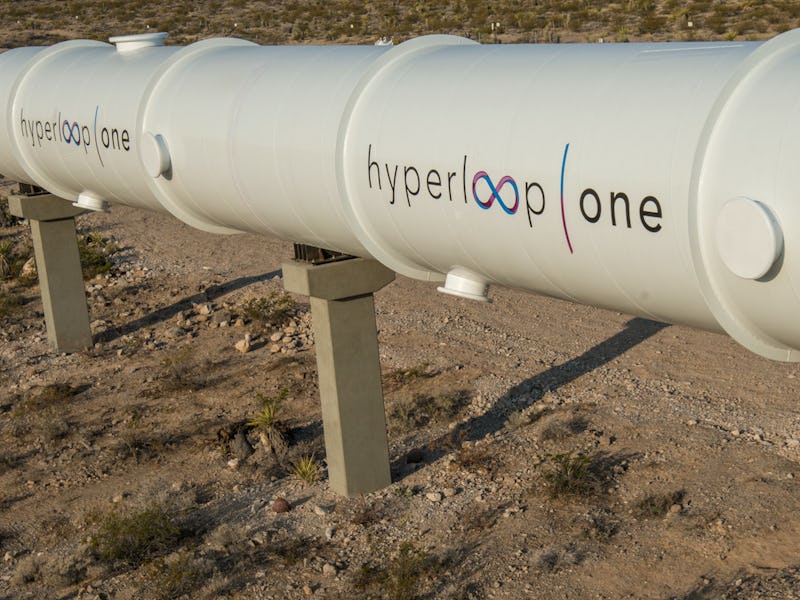Rob Lloyd, the CEO of Hyperloop One, the Los Angeles-based start-up that wants to turn Elon Musk’s vision of the super-fast hyperloop transportation system into a reality, said on Wednesday that he’s optimistic about what Donald Trump’s presidency could mean for infrastructure projects.
“I am actually very hopeful that some of the programs that were actually advocated by both of the candidates for investing in infrastructure,” Lloyd told Inverse after a brief keynote during the press days ahead of the LA Auto Show, which opens to the public on Friday.
Current transportation systems are overloaded and old, says Hyperloop One CEO Rob Llloyd.
Lloyd also said he’s very familiar with some the “repatriation ideas” to bring back the cash “that a lot of high-tech and pharmaceutical companies have off-shore.”
“If that cash and capital comes back [to the United States], and we are able to come up with some ideas as to how that money could be redirected to infrastructure investments, our company is going to require equity, debt, and probably public funding — but it’s probably a combination of those things,” Lloyd said. “I actually am encouraged in 2017 and 2018 that we’ll see a much less bleak outlook for investments in infrastructure in the United States.”
President-elect Trump has made infrastructure promises that he says would stimulate the economy by creating construction jobs that could mean hyperloop construction.
No Mention of the United States
During Lloyd’s keynote, he mentioned a possible hyperloop connecting Manchester and London in England, a study that would connect Helsinki, Finland, to Stockholm, Sweden (it would “redefine a region of economic power”) and perhaps the most tantalizing, a futuristic hyperloop in the already-futuristic United Arab Emirates. There was no mention of Hyperloop One in the United States. But when it does arrive, it’ll be about moving cargo first, Lloyd said.
“If I had to bet, I would bet a dollar and I’d bet a thousand it will be cargo first before passengers,” he said.
Hyperloop One test tubes at its facility north of Vegas.
Testing in Southern California
Hyperloop One is already conducting feasibility studies about moving cargo inland from ports in Southern California, Lloyd said.
“Our hypothesis here is that cargo would be the easiest to actually get certified by the department of transportation, which would be required to put our system into production,” he said. “We’re actually doing some studies right now relative to containers in some of the very dense areas of the world, starting right here in Los Angeles, where we’re actually studying moving containers from the ports of Los Angeles and Long Beach — utilizing existing right-of-ways — through Los Angeles, out near San Bernardino, Riverside, and then actually having a dry port that would take thousands and thousands off the already-congested freeways here.” The result? “Making it just a little bit nicer to live in Los Angeles,” he said.
Hyperloop One is still developing its technology, and its company is still relatively small (210 people work at its downtown LA headquarters and 65 at its testing center north of Las Vegas), but Lloyd expects it will grow to 500 within a year. Lloyd said Hyperloop has raised $160 million in equity and expects to grow more “in the very near future.”
And perhaps most importantly:
“We’re building the fundamental prototype right now just north of Las Vegas,” Lloyd said. “It will be ready in the first quarter of next year.”
